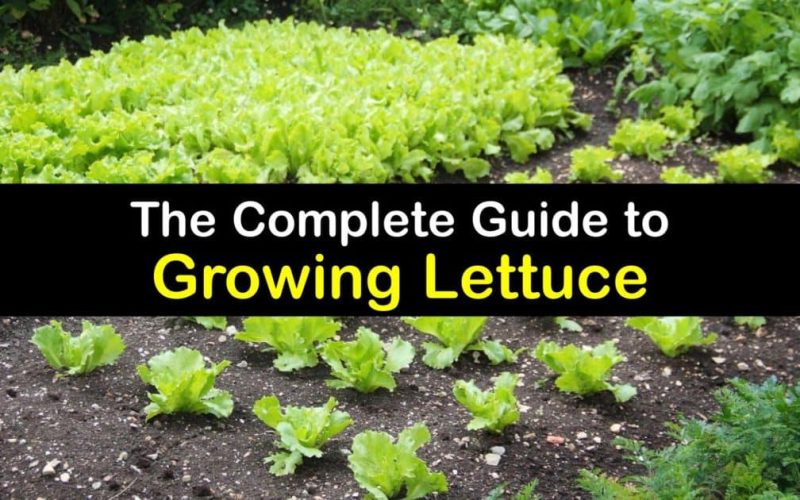Introduction
Gardening may start with a seed, but the journey from soil to harvest is more complex than it seems—especially when it comes to growing lettuce. While many gardeners focus on watering, sunlight, or soil nutrients, there’s one factor often overlooked: germination rates. This small-sounding metric can make or break your lettuce yield, influence your planting calendar, and even shape the health of your entire garden ecosystem.
Lettuce is one of the most common leafy vegetables grown in home gardens, prized for its fast growth, crisp texture, and adaptability to small spaces. Yet, poor germination often leads to patchy growth, wasted time, and inconsistent results. If you’re wondering why your lettuce isn’t sprouting the way it should, you’re not alone and you’re in the right place to learn why lettuce germination rates matter so much.
The Lettuce Germination: The Basics

Before delving into the significance of germination rates, it is imperative to comprehend what germination comprises. To come out of dormancy, lettuce seeds, like other seeds, need the perfect ratio of air, water, and temperature. But lettuce is really particular.
Unlike beans or tomatoes, lettuce seeds:
- Require light to germinate; they should not be deeply buried.
- Are sensitive to heat and may refuse to sprout in temperatures above 75°F.
This makes timing and conditions absolutely critical for gardeners. If even one factor is off, you could face a germination rate below 50%, wasting your seeds and delaying your growing season.
Why Germination Rates Affect Garden Planning
For example, suppose you want to grow lettuce in four garden beds. Once the seeds are evenly spaced, you expect them to sprout within a week. However, only half of them grow. Your crop is now unevenly matured, which increases the risk of pests, results in irregular harvests, and wastes space in addition to having empty spaces.
A high germination rate helps in:
- Achieving uniform plant growth
- Maximizing soil productivity
- Predicting harvest times with greater accuracy
These are not just aesthetic concerns; they’re logistical. If you’re planning companion planting or staggered harvests, your entire plan relies on consistent seed performance.
What Influences Lettuce Seed Germination Rates?
Germination rates aren’t random they depend on a mix of biological and environmental factors. Some of the key influencers include:
- Seed Age: Fresh lettuce seeds have higher viability. After a year, germination rates can drop significantly. In fact, research from the University of Illinois notes that lettuce seeds stored for more than two years may see viability dip below 60%.
- Soil Temperature: Optimal lettuce germination occurs between 60°F and 70°F. In hotter regions, even early spring sowing can lead to failure if soil retains heat.
- Moisture Levels: Lettuce seeds are tiny and can easily dry out. Inconsistent watering causes them to lose momentum mid-germination.
- Seed Quality: All seeds are not created equal. Investing in high-quality, tested seed stock ensures higher germination performance. If you’re just starting out or looking to improve success, always Buy Lettuce Seeds from a trusted source that provides germination guarantees.
How to Test Germination Rates at Home
Even without laboratory tools, you can check how viable your lettuce seeds are. The paper towel test is a classic method:
- Place 10 seeds on a moist paper towel.
- Fold it and place it in a sealed plastic bag.
- Keep it in a warm spot (65–70°F) for 5–7 days.
Count the number of seeds that grew after a week. Seven out of ten would have a 70% germination rate, which is still usable but might need supervision.
The Ripple Effect of Poor Germination
In addition to decreasing the amount of lettuce you produce, poor germination can throw off the rhythm of your entire garden. Lettuce is sometimes used as a “space holder” crop or interplanted with slower-growing vegetables such as tomatoes or peppers. If your lettuce doesn’t sprout:
- Weeds take over the empty spaces
- You lose the shading effect for surrounding plants
- Nutrient dynamics in the soil are altered
You’re also more likely to experience pest issues. Bare soil encourages gnats and fungus growth, especially if the area stays moist waiting for seeds to sprout.
“A garden is a grand teacher. It teaches patience and careful watchfulness; it teaches industry and thrift; above all it teaches entire trust.” — Gertrude Jekyll
How Commercial Growers Use Germination Data
In the commercial farming world, seed germination rates aren’t just a suggestion—they’re a business metric. Commercial growers often use germination data to:
- Calculate exact seeding rates per acre
- Avoid crop failure by using predictive growth models
- Minimize the cost on seed while maximizing yield
The USDA even sets specific germination standards for seed sellers to ensure farmers can trust the viability listed on the packet. If you’re passionate about your garden, you can use even a few commercial tactics to boost its yield considerably.
Strategies to Improve Germination Rates in Your Lettuce Patch

Improving your lettuce germination starts with controlling environmental variables. Here are a few practical methods:
- Pre-chill your seeds: Known as stratification, refrigerating seeds for 2–3 days mimics early spring temperatures and can boost germination by up to 20%.
- Use seedling trays under cover: This gives you control over moisture, light, and temperature.
- Water with a mist sprayer: Heavy watering can displace or bury small seeds. A mist maintains moisture without soil disruption.
- Select heat-resistant varieties: Some lettuce cultivars are bred for higher temperature tolerance, ideal for warmer climates.
The Importance of Light and Depth
Contrary to popular belief, light is necessary for lettuce seeds to sprout. They might never come out if you bury them too deeply, even half an inch. The right depth? You can either lightly cover them with fine compost or gently press them into the surface soil.
One of the main causes of unsuccessful germination is this. Unknowingly undermining their efforts, gardeners frequently treat lettuce the same way they would other vegetables. Because of the lack of light exposure, a seed that is too deep may decay or never activate.
Why Germination Impacts Nutrient Timing
The timing is important when adding organic fertilisers, fish emulsion, or compost to your plants. The timing of germination dictates when your plants will begin absorbing nutrients. Delays in germination could cause those nutrients to be lost before roots have a chance to absorb them.
This is especially crucial for crops that develop quickly, like lettuce. Your fertiliser plan can change with even a 5-day delay. One subtle but frequently disregarded component of effective gardening is nutrient synchronisation.
Gardeners Share Their Numbers
It’s one thing to talk theory. Here’s what real gardeners report when tracking their lettuce germination:
- 85% germination using fresh, pelleted seed under row cover
- 60% germination using older seed in direct sun
- 92% germination using seed trays and misting dome
What’s the takeaway? Method matters. Investing a little extra effort in the beginning pays off in sprouting success and harvest abundance.
Keeping the Momentum: Your Next Steps
The secret to successful gardening is germination, which is more than just the start of your lettuce crop. Increasing your germination rates can significantly increase your productivity, efficiency, and general garden happiness, regardless of your level of experience.
Consider germination the planned beginning of your garden rather than a chance. Monitor your metrics, test your ideas, and streamline your workflow. In this manner, every square foot of your garden is valuable, and your labour is evident in every salad dish.
Allow your garden to write the outcomes and your seeds to tell the tale.
Common Questions About Lettuce Germination
Q1. Why do my lettuce seeds sprout and then stop growing?
This is usually due to sudden temperature shifts or overwatering. Lettuce roots are shallow and sensitive.
Q2. How long do lettuce seeds stay viable?
Typically, up to 2 years if stored in a cool, dry place. Viability drops significantly after that.
Q3. Do lettuce seeds need to be soaked before planting?
It’s not required, but a quick 4-hour soak can sometimes jumpstart sluggish seeds.
Q4. Is it okay to reseed areas where lettuce didn’t sprout?
Absolutely. Just be cautious not to disturb existing seedlings.
Q5. Can I grow lettuce indoors for better control over germination?
Yes, especially in trays near a sunny window or under grow lights. Indoors offers ideal temperature and moisture control.












